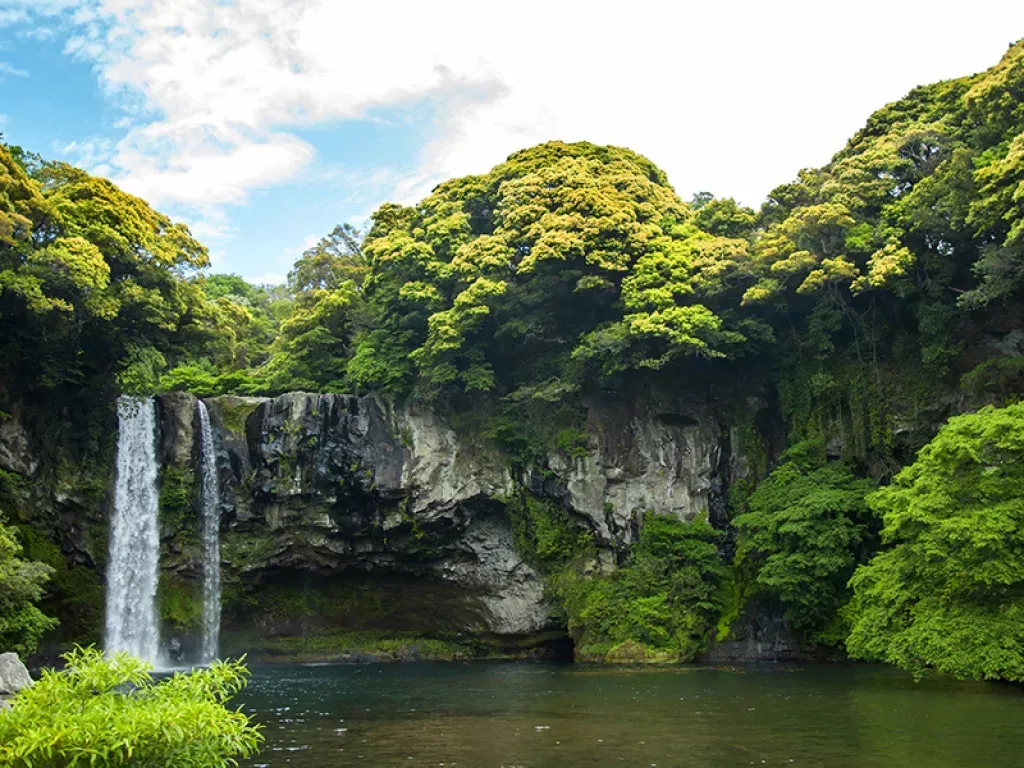Jeju hosts two regional cities; Jeju City, and the southern hub of Seogwipo. Seogwipo offers a quieter, more secluded alternative to Jeju City and is the perfect gateway to exploring the volcanic southern coast. The city is easily covered on foot, with downtown Seogwipo hosting the traditional Olle Market.
Seogwipo is surrounded by lush gardens and citrus farms bordered with fences made from the local black rock. Nearby attractions include the Jeongbang Falls, as the only waterfall in Asia that pours directly into the ocean. Similarly, Cheonjiyeon Pokpo is another jaw-dropping waterfall that can be reached by a short hike through a scenic forested gorge. Both falls can be found on the Olle Trail Six, or by taking a city tour bus from central Seogwipo.
Blessed with clear waters and mild ocean temperatures, Jeju’s second-largest city is also popular for its scuba-diving opportunities, boat trips and submarine tours.
THE MERMAIDS OF JEJU IN SEOGWIPO
Alongside the Jungmun Resort area, Seogwipo is one of the best places to observe the iconic deep-sea divers of Jeju at work. Otherwise known as haenyeo, these free divers are all aged 60 plus, with a minority still diving well into their eighties, and are an iconic and unique feature of Jeju’s cultural history.
Women began diving off the island for food when Jeju’s menfolk would disappear for weeks at a time on fishing boats. Without the use of any breathing apparatus, haenyeo continue to dive to depths of between 10 and 20 metres in wetsuits searching for the likes of octopus, abalone, clams and seaweed. This seafood provides an essential food source, particularly since the Asian staple of rice is unable to grow on Jeju’s wild and windy shores.
Although the haenyeo are a rarer phenomenon today, they remain a source of renown throughout the country.


